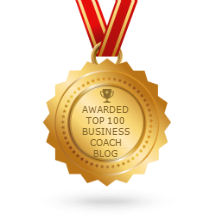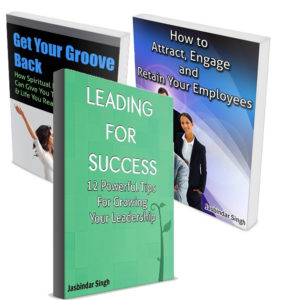 Dario Nardi, PhD is also the founder and CEO of Radiance House media and books. He is also a founder of UCLA’s Human Complex Systems degree program, winner of UCLA’s annual Distinguished Teaching award, and author/coauthor of numerous books including Neuroscience of Personality and “8 Keys to Self-Leadership”. You can find more at www.radiancehouse.com and www.darionardi.com. Dario will be presenting at the Type conference in Melbourne in October, 2012 with a possible workshop in New Zealand as well.
Dario Nardi, PhD is also the founder and CEO of Radiance House media and books. He is also a founder of UCLA’s Human Complex Systems degree program, winner of UCLA’s annual Distinguished Teaching award, and author/coauthor of numerous books including Neuroscience of Personality and “8 Keys to Self-Leadership”. You can find more at www.radiancehouse.com and www.darionardi.com. Dario will be presenting at the Type conference in Melbourne in October, 2012 with a possible workshop in New Zealand as well.
1. How did you get drawn into the work you are doing currently?
Five years go I used teaching award funds to buy brain-mapping equipment. In retrospect, I took a lot on faith that the device would take me somewhere useful. After my first session with some students, I couldn’t sleep for weeks. It was so exciting! The students found it very meaningful too. To peer inside themselves in a way they’d never done before. Every time I sit down with someone, it’s an opportunity for new observations and connections. And people want to know about the neuroscience of personality, because it’s so personal and also scientific, a wonderful marriage! Now I’m doing workshops, a training program, creating materials, etc. But I keep in mind the topic is still young. There is a lot left to learn.
2. How can we engage our brains better to generate higher levels of motivation and better decision-making?
There’s something I call the engagement curve. Our brains get more active as motivation and/or competent in a task increase. If the task is too easy, too hard, or generally irrelevant to the person, then brain activity goes down.
To go from awareness to action, we need to understand what boosts motivation and competence. Susan Nash has a great coaching methodology for when and how to engage people to increase competence.
Regarding motivation, the possibility of positive feedback tends to motivate people. A manager who gives negative feedback on positive results is begging for low morale. And yes, we rig our systems to do that. For example, UCLA has teaching evaluations but funding for teaching is decided by other factors. So why bother to teach well? And when teaching is poor, why would students be motivated to learn? The underlying issue in this case is a lack of shared purpose. The general lessons: Goals and values should clearly align in all directions, and there should be honest rewards for individuals’ actual performance.
People also get excited when they engage in a design cycle on a product that is meaningful to them. I’ve seen this first-hand. When someone exclaims, “I’m making this, it’s for good, and I’m making it better!” then the person is displaying pride of ownership.
3. Tell us about Jung’s eight cognitive functions and the relationship with brain functioning?
People who know Myers-Briggs think of dichotomous preferences: Sensing or Intuiting, Thinking or Feeling. However, Jung’s focused on eight psychological types. He proposed that for each of us, one of eight is dominant while a second one plays a support role. The result is sixteen possible types. Now, I recruited people of all types into my lab and gave them ten weeks to get to best-fit type. I really wanted—as many people might—for specific brain regions to clearly correlate to each type or function or whatever. But human beings are more interesting than that. Jung’s eight cognitive functions showed up as patterns of activity across the neocortex, rather than in specific regions.
4. How do the different personality types use their brains differently?
More or less, we share the same brain resources. But we each use our brains differently due to training, background, context, and personality type.
One way we differ: the amount of stimulus needed to get a brain region active. For example, there is a region called T5 that helps us notice and respond to social feedback. Do people approve of us or not? That region generates emotions like embarrassment to push us to alter our behavior, to get approval. For some types such as ENFJ, the smallest hint of feedback gets this region active. They truly feel social pressure. For other types such as ISTP, it takes a ton of obvious feedback to evoke activity, and it comes like a tidal wave when it does.
Another way we differ is holistic brain patterns. For example, everyone shows a particular “tennis hop” pattern when they play certain video games. But types such as ESFP and ESTP show this activity a lot of the time. In evolutionary terms, it has likely been a very useful way to survive. Like a tennis player who gently hops back-and-forth to maintain momentum, these types save their mental energy and stay alert to spring into action in times of crisis. In the game of life, we rarely know which way the ball will come back to us!
5. How can we (or different personality types) harness and sustain a greater sense of creative flow?
A really exciting discovery: people can and do enjoy a state of creative flow. This flow shows up on the EEG monitor as a solid bright blue across the whole neocortex. The person is energized, relaxed, and engaged.
Flow occurs when people do their expertise, such as a musician playing and singing his own music.
Flow also occurs based on personality type. I’ve watched an INFP remain in flow for a solid 10 minutes as he engaged in active listening with a fellow student on the contentious topic of gun control. Even when speaking, he was listening. For other types it differs. ISTJ and ISFJ get in flow when reviewing the past, while INTJ and INFJ get in flow when envisioning the future! Sounds like type to me!
There are other kinds of flow. What’s important is to help people become aware of what brings them into flow, or to help them get there, and then to honor that time in our everyday lives in career choices.
6. What some keys to self-leadership from your understanding are of brain functioning? How can we better self-lead?
There are many lessons. Some are general, like appreciating how we all truly differ in terms of what we perceive and how we decide.
Others lessons more specific. For example, brain regions generate emotions to encourage us to change our behavior, to survive and hopefully thrive. Moreover, those regions can act in a circuit pattern. Maybe Jane Smith ignores negative input most times and then sometimes explodes seemingly out of nowhere. She has a whole circuit going on there. Emotions play a huge part in our lives, and leaders who fail to account for emotional dynamics miss out on a lot. I’m sorry to say I didn’t start working out emotions until after I published my book. But that’s why training programs and new editions are for!
7. What is a brain savvy insight you could give to the readers of this blog? How can we use this information to enhance organizational effectiveness e.g. leadership, management, employee engagement.
Here is a practice tip. When someone has a realization, the insight does not just get instantly wired into the brain. It was just a blip. So please leaders, to keep and benefit from your employees golden nuggets, when someone gains an insight, let them test it out in a small way to practice it. Practice results in new neural pathways. We internalize the insight rather than forget about it or ignore it. Also, it gives the person a stake in the insight and if the idea failed on their watch, at least they know why and how.
8. Where do you see your research going next?
For research, I really want to move to a next level, to get hundreds of people hooked up wirelessly over the course of their daily routine, to truly verify (or not) the current observations and no doubt discover a lot more. The challenge is getting to “true type” with all these folks and also to debrief them, to better understand what was going on when in their minds.
I’d also like to keep refining and validating my NeuroPQ inventory, which helps people profile their likely brain activity without all the goopy equipment. No doubt this will take a couple years.
Finally, people have lots of questions: What about older folks? What about marketing, love, sports, and so forth. All that will take time.
Alas, my brain is prone to wandering into new topics rather than specializing in them!
____________________________________________________________
3 Questions for you to ponder:
1) How do you get the best of your brain?
2) How might you help employees get the best from their brain?
3) What helps you get into your flow state?
I look forward to hearing from you on any of these questions! Feel free to drop me a line via email or as part of the blog – love to hear your thoughts and insights!
Jasbindar Singh is a coaching psychologist who works with managers and leaders understand thier own and and others personalities better for best outcomes on all fronts.






 Follow Jasbindar on Twitter
Follow Jasbindar on Twitter



